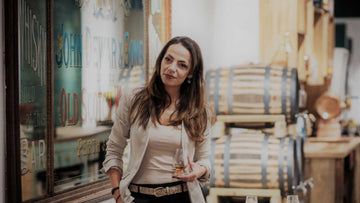How different Scotch whisky production processes can influence flavour
While all whisky distillery trips are sadly on hold, we thought it’d be fun to produce a list of variations present in the production processes at of some of our best known distilleries and how they can influence the flavour of their whiskies.
But first, a few notes:
a) this list is not exhaustive!
b) because so much flavour develops during maturation (many distillers believe it’s over 50%) it can be difficult to see marked differences between production variations in the end product… you’d ideally want to sample the new make spirit.
c) as fermentation length and cut points are not usually in the public domain, the effect of these can also be hard to judge in the final product.
Nonetheless, here are five Scotch whisky production processes known to influence flavour.
1. Fermentation
The length of fermentation plays an important part in developing the flavour compounds within the spirit. A longer fermentation is thought to produce a sweeter, fruitier wash. Benromach has one of the longest fermentations at 115 hours whereas Knockando has a much shorter one at around 50 hours. It’s common now for distilleries to operate partly with long and partly with short fermentations.
2. Still shape
Still shape has an important effect on the flavour of the new make spirit. The size and shape of the still will influence the reflux taking place inside. Anything that increases reflux will reduce the less volatile compounds carrying over into the spirit, with only the more volatile compounds (with lower boiling points) being collected in the spirit. These more volatile compounds tend to have lighter, fruitier and sweeter aromas. Heavier and bolder compounds are collected when less reflux occurs.
Stills such as those with ball and lantern shapes where the stills narrow have more reflux. The ‘boil ball’ also increases condensation inside the still and therefore enhances reflux. The onion shaped still would have the least reflux.
The most obvious examples of opposing still shapes are Macallan and Glenmorangie. Macallan with their squat stills and Glenmorangie with the tallest stills in Scotland.
Here are some examples of distilleries with different still shapes:
Pear-shaped stills:
Lagavulin
Onion-shaped stills:
Miltonduff
Bruichladdich
Kilchoman
Springbank
Flat-top stills:
Cragganmore
Dalmore
Old Pulteney
Boil Balls:
Old Pulteney
Glenmorangie
Kilchoman
Lomond Style still:
The only working Scottish distillery to still use a Lomond style is Scapa.
Some distilleries have a purifier on their stills (a pipe linking the lyne arm back to the pot). This acts as an extra semi-distillation increasing the reflux and allowing for the heavier, oily vapours to be broken down and rise up the lyne arm.
Distilleries that currently have a purifier:
Arbikie
Ardbeg
Glen Grant
Isle of Harris
Strathmill
Edradour
Glen Spey
Glenlossie
Tormore
Scapa
Talisker
3. Lyne Arms
The slope of the lyne arm alters the reflux in the still and therefore alters how light or heavy the spirit will be. If the lyne arm slopes up as it comes from the still, the vapour that condenses in the lyne arm will run back into the still, thus increasing reflux. The opposite will occur if the lyne arm slopes down to the condenser from the still. A bend on the lyne arm will impact upon the spirit depending upon the slope around about the bend.
Talisker has a U-bend lyne arm.
Tobermory has an S-bend lyne arm.
4. Worm tubs
Using a worm tub condenser produces a heavier, meatier and bigger style of whisky because the worm tubs keep the sulphur compounds in the new make spirit.
There are currently 16 distilleries in Scotland using worm tubs:
Ballindalloch
Balmenach
Benrinnes
Glenkinchie
Cragganmore
Craigellachie
Dalwhinnie
Edradour
Glen Elgin
Mortlach
Oban
Old Pulteney
Royal Lochnagar
Speyburn
Springbank
Talisker
5. The Cut
The size of the cut should match the distillers intended character and flavour profile for the spirit. The exact details of the size of the cut is often a closely guarded secret although Macallan is thought to have the smallest cut. Some distilleries such as Ardbeg purposely have larger cuts in order to capture some of the more phenolic compounds. Having different cut points from spirits to feints is a major way of influencing the phenolic flavour in the spirit.
Another example is Caol Ila and Lagavulin which use exactly the same malted barley but with different cut points. Lagavulin has a slightly later cut than Caol Ila, allowing for the ‘stronger’ and ‘bolder’ phenols to go through into the new make spirit collected.






